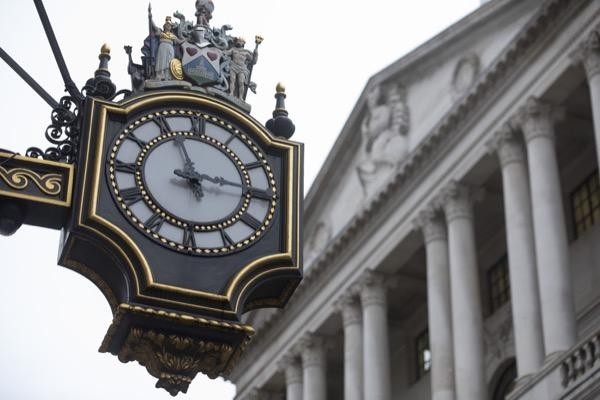BoE committee faces tough balancing act on Thursday
The Bank of England (BoE) faces a delicate balancing act on Thursday, with markets widely expecting a quarter-point interest rate cut to 4%. But the real question is not whether they will cut, but how divided the vote will be.
The previous meeting saw an unexpectedly close split, with three Monetary Policy Committee (MPC) members backing a reduction despite rates being held steady. That division highlighted just how mixed the economic signals have become, leaving policymakers grappling with conflicting data points.
May’s rate cut saw an even starker divide among committee members, and Thursday’s decision looks set to follow a similar pattern. Some members may push for a bigger reduction given mounting economic concerns, while others could favour standing pat.
This internal debate reflects the broader uncertainty facing the United Kingdom (UK) economy. With growth concerns mounting but inflation risks persisting, the committee finds itself caught between competing pressures that make consensus increasingly difficult to achieve.
Labour market weakness builds case for easing
The case for cutting rates is certainly building, with labour market data showing clear signs of deterioration. Unemployment has been rising steadily, while job vacancies continue to fall across most sectors of the economy.
These trends typically warrant a more dovish approach from central banks. Weakening employment conditions often signal broader economic softness ahead, suggesting that monetary policy may need to become more supportive to prevent a deeper downturn.
Weekly earnings growth has also started to moderate, reducing concerns about wage-price spirals that had worried policymakers earlier in the year. This gives the BoE more room to manoeuvre without fears of stoking excessive pay increases.
However, the labour market data remains somewhat mixed, with some sectors still showing resilience. This patchy picture makes it harder for the committee to reach unanimous agreement on the appropriate policy response.
Inflation risks complicate the outlook
Policymakers cannot ignore the inflation risks that continue to lurk beneath the surface.
Food prices: have been climbing again in recent months, putting upward pressure on household budgets and overall price indices
Trump’s tariff threats: add another layer of uncertainty to the inflation outlook. Any significant trade restrictions could push up import prices, potentially feeding through to consumer costs over the coming months
Energy market volatility: remains a persistent concern, with crude oil and gas prices subject to geopolitical tensions and supply disruptions. These factors could quickly reverse the recent progress made in bringing inflation back towards target levels.
The latest purchasing managers index (PMI) surveys: have also flagged rising cost pressures for British businesses. If these translate into higher prices for consumers, it could complicate the BoE’s efforts to maintain an accommodative monetary policy stance.
Monetary policy report holds key insights
Thursday’s widely anticipated cut may not be the end of the story for 2025. The August monetary policy report will provide crucial insights into the committee’s thinking about the path ahead for interest rates.
Inflation forecasts
All eyes will be on the inflation forecasts, with the potential for upward revisions that could complicate future easing decisions. Any significant changes to growth projections will also influence how markets interpret the BoE’s policy stance.
Global risks
The report’s assessment of global risks will be particularly important given ongoing uncertainties around trade policy and geopolitical tensions. These external factors could significantly influence the UK’s economic trajectory over the coming quarters.
Markets will scrutinise every word of the accompanying commentary for clues about whether November could bring another reduction. The tone and emphasis of the communications may prove more important than the actual rate decision itself.
Sterling reaction depends on voting split and guidance
For foreign exchange (forex) markets, the key will be parsing the tone of communications alongside the decision itself. A dovish tilt from the majority of committee members could weigh on the pound sterling against major currencies.
The size of the voting split will be crucial for market reaction. A narrow majority for cutting could suggest future decisions remain finely balanced, potentially supporting the pound by limiting expectations for aggressive easing.
Any hawkish surprises in the inflation forecasts might provide support for pound, particularly if they suggest the BoE may need to be more cautious about future rate cuts. Markets have become increasingly sensitive to shifts in central bank messaging.
Those looking to trade the decision should consider the broader global context. With other central banks also navigating similar challenges, relative monetary policy stances could drive currency movements more than absolute rate levels.

